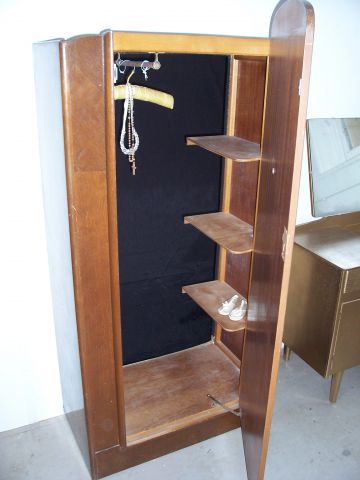I have been re reading Poetics of Space this afternoon and wanted to include some quotes from the chapter ‘drawers, chests and wardrobes’.
In particular I am intrested in thinking about the wardrobe as an image of intimacy “…as also with all the other hiding places in which human beings, great dreamers of locks, keep or hide their secrets.” (p74)
“Wardrobes with their shelves, desks with their drawers, and chests with their false bottoms are veritable organs of the secret psychological life. Indeed without these ‘objects’ and a few others in equally high favor, our intimate iife would lack a model of intimacy” (p78)
“But the real wardrobe is not an everyday piece of furniture. It is not opened every day, and so, like a heart that confides in no one, the key is not on the door.” (p79)
“…there will always be more things in a closed than in an open box. To verify images kills them and it is always more enriching to imagine than to experience.” (p88)
[Gaston Bachelard (1964) Poetics of space]
The psychology of secrecy is an area for further research, initial searches bringing unsatisfactory documents or ones where only part is visible (!).
I have found this image from previous work (2008-9). This was from the first series of works made with it, after its initial acquisition, over a year after my nan had died. The openess of the wardrobe bothers me initially, especially in considering the above quotes. I feel exposed. Nonetheless I have included it as example, less than ideal it shows the insides of the wardrobe – which is I think my own discomfort. What may not be clear is that the back of the wardrobe went into a ‘void’ – a black empty space that appeared to go on forever, abyss-like. (Again the photograph does not give a clear sense of the piece but I hope is good enough to demonstrate).
I remember having thoughts of death in relation to it, and it created a sense of fear of falling into it or of intrigue, depending on the viewer. The objects placed in the wardrobe are: a new pair of unworn child’s ballet shoes, a fabric covered coat hanger from which wooden rosary beads and a silver coloured plastic horseshoe (a wedding charm) hang. Notions of endings and loss are prevalent. I am interested in how much, or how little is needed to suggest narrative, to create space for the viewer to project and wonder – to add their own story.
…pondering this further I think the response of discomfort is partly the confrontation with the image from an earlier time. It is also more connected with a sense of self in relation to object I think as well. Previous images have explored relationship of objects with one another or of object with space. This image is of work that was focussed on the object alone and my response to it. Although I added other objects to it and have explored space (in the space beyond the wardrobe), this feels more of a representation or exploration of something more personal in relation to the wardrobe. I am reminded of an earlier comment which highlights Claude Cahun’s ‘Self Portrait in Cupboard’:
http://www.theartsdesk.com/index.php?option=com_k2…












